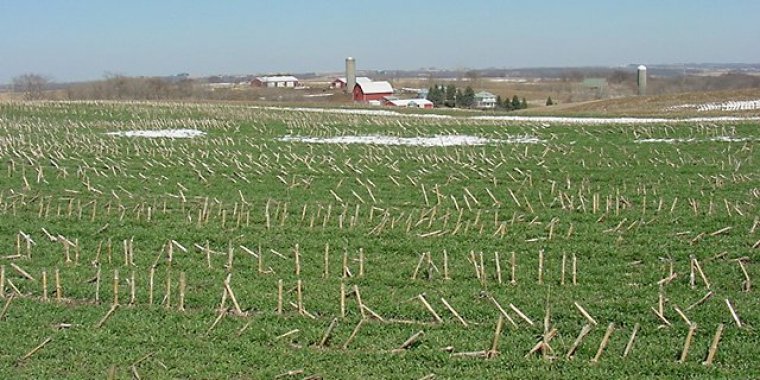| News / World News |
Rye the Right Crop for “Nabbing” Nitrates, Capturing Carbon and Generating Bioenergy
Winter rye is prized for its versatility. It is a source of grain and also a forage and ground cover that protects the soil from erosion by wind and rain.

Winter rye cover crops offer multiple benefits, including carbon sequestration. Photo: Tom Kasper, D3362-1
A series of studies suggest that establishing a cover crop of winter rye between rotations of corn and soybean can reduce nitrate losses, sequester carbon, and provide a source of renewable natural gas.
Establishing a winter rye cover crop between corn-soybean rotations in tile-drained fields (meaning, those using a system of underground drainage pipes to remove excess water) reduced nitrate levels in drainage water by more than 45 percent compared to rye-free fields—or about 21 and 44 kilograms per hectare, respectively.
Nitrate poses an environmental concern when it goes unused by crop plants and escapes into streams, river, lakes and other bodies of surface water, compromising water quality and helping fuel algal blooms.
The subsequent death and decay of the algae in these blooms consumes oxygen, killing or driving off fish and other aquatic life.
In coastal waters like the Gulf of Mexico, this condition is known as hypoxia, and it creates a "dead zone" spanning several thousand square miles, a size that can exact a costly toll on commercial fisheries and other associated industries.
That rye residue, in turn, has potential to yield 210 million megajoules of energy annually—the equivalent energy content of 2.3 billion gallons of ethanol—were it to be converted into bio-methane gas using anaerobic digesters.
The simulations also indicate that in the bio-methane production process, a standard filtration step called "upgrading" could enable the removal and capture 7.5 million tonnes (8.3 million tons) annually of carbon dioxide, preventing its release back into the atmosphere when the biogas is burned for power or heat and creating a carbon sequestration benefit for farmers.
The researchers don’t view winter rye cover crops as a proverbial "magic bullet" for managing nitrogen and improving the environment, however.
Rather, it’s likely to be integrated with other measures, including the use of saturated riparian buffers, controlled drainage, wetlands and bioreactors. (Agricultural Research Service)
YOU MAY ALSO LIKE





